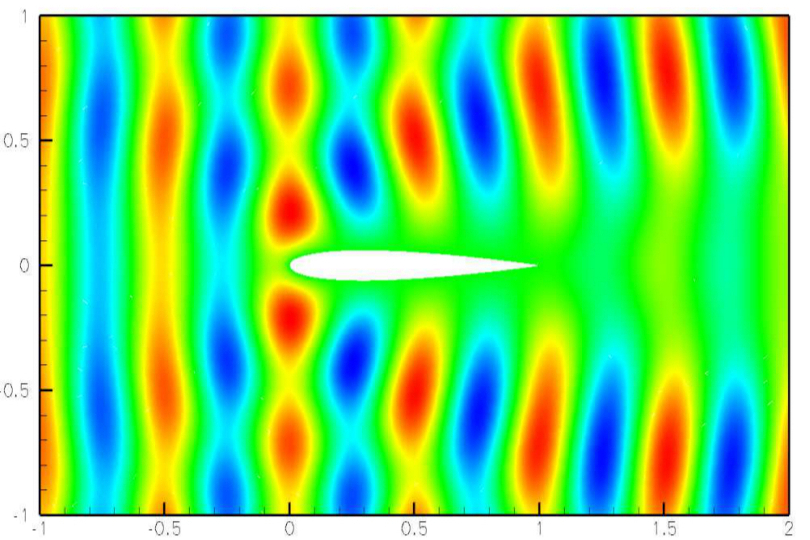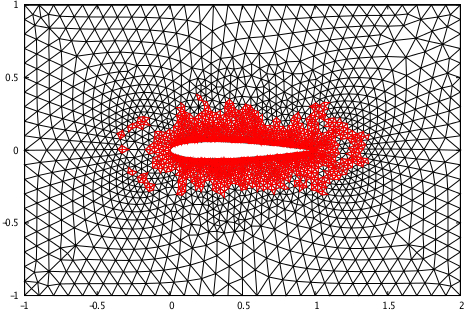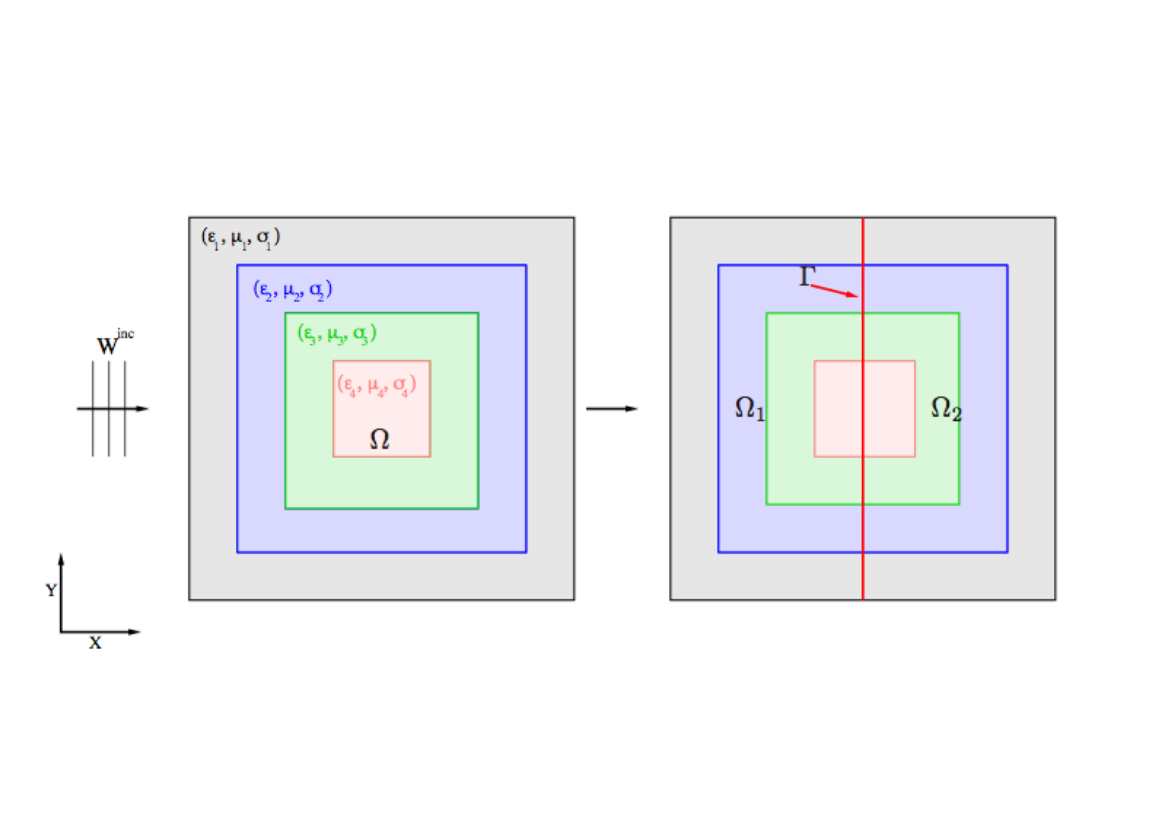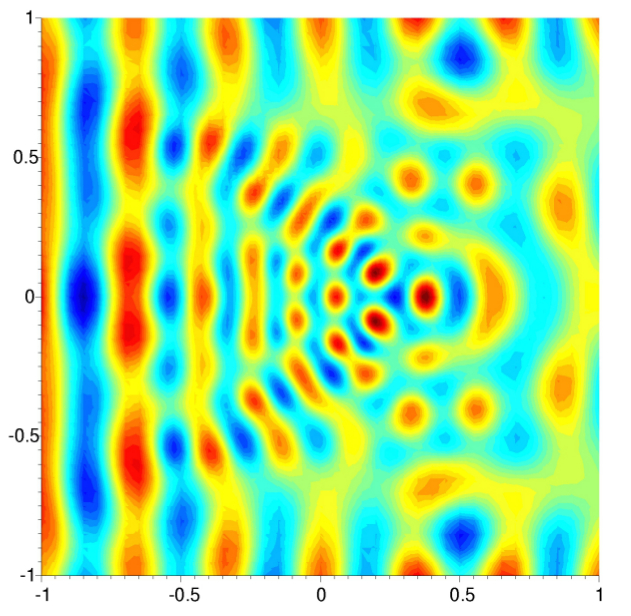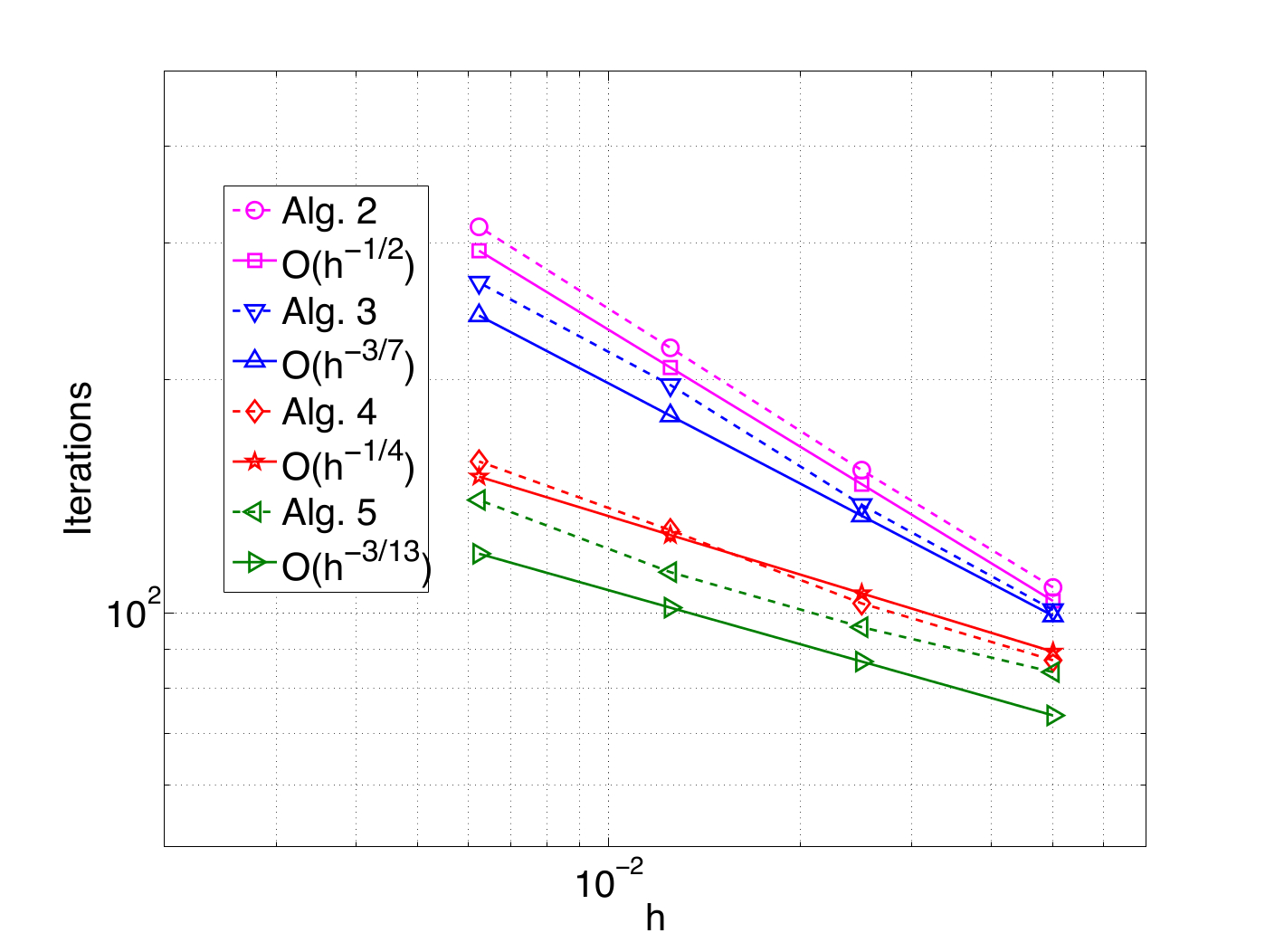Section: New Results
Time integration strategies and resolution algorithms
Hybrid explicit-implicit DGTD-
Participants : Stéphane Descombes, Stéphane Lanteri, Ludovic Moya.
Existing numerical methods for the solution of the time domain Maxwell
equations often rely on explicit time integration schemes and are
therefore constrained by a stability condition that can be very
restrictive on highly refined meshes. An implicit time integration
scheme is a natural way to obtain a time domain method which is
unconditionally stable. Starting from the explicit, non-dissipative,
DGTD-
|
Optimized Schwarz algorithms for the frequency domain Maxwell equations
Participants : Victorita Dolean, Martin Gander [Mathematics Section, University of Geneva] , Stéphane Lanteri, Ronan Perrussel [Laplace Laboratory, INP/ENSEEIHT/UPS, Toulouse] .
Even if they have been introduced for the first time two centuries
ago, over the last two decades, classical Schwarz methods have
regained a lot of popularity with the developement of parallel
computers. First developed for the elliptic problems, they have been
recently extended to systems of hyperbolic partial differential
equations, and it was observed that the classical Schwartz method can
be convergent even without overlap in certain cases. This is in strong
contrast to the behavior of classical Schwarz methods applied to
elliptic problems, for which overlap is essential for convergence.
Over the last decade, optimized versions of Schwarz methods have been
developed for elliptic partial differential equations. These methods
use more effective transmission conditions between subdomains, and are
also convergent without overlap for elliptic problems. The extension
of such methods to systems of equations and more precisely to
Maxwell's system (time harmonic and time discretized equations) has
been studied in [9] . The optimized interface
conditions proposed in [9] were devised for the
case of non-conducting propagation media. We have recently studied
the formulation of such conditions for conducting media
[4] . Besides, we have also proposed an
appropriate discretization strategy of these optimized Schwarz
algorithms in the context of a high order DGFD-



